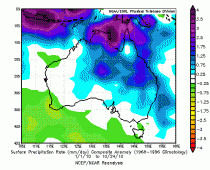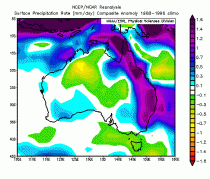By Paul Chesser
That’s the talk, as hundreds of thousands of ballots in Fresno County contained illegal, politically-charged language describing the global warming act-postponing measure. The Sacramento Bee reports:
Ballots printed for the county’s roughly 380,000 registered voters say Proposition 23 would suspend laws requiring “major polluters” to report and reduce greenhouse gas emissions. That language was thrown out by a Sacramento superior court judge, who ordered several edits to the original language drafted by the attorney general’s office, including changing “major polluters” to “major sources of emissions.”
The Proposition 23 campaign has demanded that the county “take immediate steps to reprint the ballots remaining to be sent to vote by mail voters as well as ballots to be distributed on election day.”
“Fresno County is a county of significant size in California and in a close election, its vote, now tainted by this serious error, could call into question the state results and possibly give rise to an election contest and require a new statewide election on Proposition 23,” attorney Colleen C. McAndrews wrote in a letter to the Fresno elections officials.
Officials say it’s too late to do anything about the 140,000 mail-in ballots that have already been distributed, and that they will post signs with the correct language at polling places.
This is not insignificant; environmental extremists have been trying to label carbon dioxide emitters (that would be me and you also, readers) as “polluters” to push their fraudulent global warming scenario since they took up the cause. If you were just faintly familiar with the issue, would you be more likely to vote against the measure if businesses were identified as “polluters” rather than “sources of emissions?”
A major screw-up that could require a new election. Not surprisingly, the opponents of Prop. 23 are pooh-poohing the significance of the error.
Read more here.
---------
Behavior of the Ruling Class - Gore leaves car idling for one hour during speech; Opts for Swedish government jet over public transportation
Climate Depot
Local legislation prohibits any car engine running for more than 60 seconds’ - But Gore Not Fined
By Einar Du Rietz
Al Gore - He did it again.
Recently, Nobel Peace Prize winner Al Gore toured again. Or maybe he does that all the time. This time, he turned up in Gothenburg (Sweden) for the usual alarmist talk. In advance, all distinguished guests were politely advised to - if possible - use any form of public transportation to go to the event, in order to minimize CO2 emissions.
Intriguingly, the Master of World Climate himself arrived in a rental car (with or without driver is unclear), from the airport, and subsequently left the engine running for the entire lecture. That is to say, about one hour. Incidentally, local legislation prohibits - for very good environmental reasons, i e pollution - any car engine running on empty for more than 60 seconds. Fines are severe. As far as I know, he was not fined.
It starts to form a pattern.
After the ceremony in the Norwegian capital Oslo, it is customary that the laureate is invited to the Swedish capital Stockholm, for a cordial visit. The train ride, supposedly the environmental choice according to Mr. Gore, is approximately four hours. However, he opted for the cosier ride with one of the Swedish government aircrafts. As these can, according to the rules, only be used when a cabinet member is on board - and as the Swedish government after a short ceremonial visit - offered to fly him to Frankfurt (Germany) for his flight to the US, you can calculate both the manpower and the fuel used for this grand tour against man’s destruction of the planet.
Stupidity and hypocrisy - as well as vanity - are, like it or not common human traits. I admit to some of them occasionally, but I don’t demand taxpayers to finance my stupid talks at dinner (yes, I love doing that). Here’s the deal Mr Gore: get out of my way, and I will keep out of yours.
[About the Author: Einar Du Rietz is a journalist and communications consultant based in Europe. He has authored several environmental reports for the Electrolux Group and loads of blogs for the Center for the New Europe at CNE Environment.]
By Roger Pielke Jr.
Daniel Greenberg, the widely respected journalist and author who focuses on science policy and politics, was invited by Nature to review my book, The Climate Fix. Little did he know that review would bring him up close and personal with the activist wing of the climate science community. After writing a positive review of my book, Greenberg found himself under attack by Michael Mann, Paul Ehrlich and Stefan Rahmstorf on the pages on Nature.
What followed was an email exchange that provides some insight into the mindset of the activist wing of the climate science community. Greenberg shared this exchange with me with the following message, published here with his permission:
Roger, Re my stirring experience of jousting with Mann, Ehrlich, and Rahmstorf: What a scurrilous bunch. My sympathy to you and anyone else who has to deal with them. They’re gravediggers of science. Nature will soon publish my riposte and, I think, a disclaimer of any ties to me by the Marshall Institute. Below, my further exchanges with the low-life trio.
Best regards, Dan
Here is Greenberg’s email to Michael Mann that concludes the exchange, reproduced with his permisison:
Dear Professors Mann, Ehrlich, and Rahmstorf,
Your correspondence concerning my review of Roger Pielke’s book “Climate Fix” has provided me with a deeper understanding of the widespread public skepticism toward climate science. In your hands, apple pie and motherhood would come under public suspicion. Have you considered taking a remedial reading course? Can you comprehend the difference between a book reviewer’s own beliefs and the reviewer’s presentation of the beliefs expressed by the author of the book under review? Apparently not. Furthermore, your insinuation of an undisclosed relationship between me and a conservative think tank is preposterous. In 2006, I participated in a panel discussion sponsored by the Marshall Institute---as I have done with numerous other organizations, including the Brookings Institution, RAND, AAAS, and various academic societies and universities. Common practice for journalists. Nor did I, as you allege, write a report, or anything, for the Marshall Institute. The panel’s words were transcribed and published by the Institute. I wrote nothing for them. You guys are the devil’s gift to the Tea Party and other climate-change wackos.
Sincerely, Dan Greenberg
If Michael Mann thinks that he has been treated unfairly by my decision not to publish his side of the exchange, I will be happy to post up his emails with his permission. Somehow I doubt that he will be as forthcoming as Greenberg. The repeated character assassination and behind-the-scenes attacks of a small segment of the climate science community gives the entire field a black eye, and it continues unabated. Greenberg is right, these guys could make apple pie and motherhood come under public suspicion.
Read more here.
By Jennifer Marohasy
On Thursday the New South Wales Government officially declared the nine-year drought ended. The very next day the CSIRO released a report warning that the ‘current drought’ appears to be at least partly linked to ‘climate change’.
The CSIRO report entitled ‘Climate variability and change in south-eastern Australia’ is an initiative of the South Eastern Australian Climate Initiative, SEACI, lead by CSIRO with input from the Bureau of Meteorology and the Murray-Darling Basin Authority.
The report forecasts a future decline in rainfall and works from the assumption there is already long term decline.
The first diagram, Figure 1, however, only shows historical rainfall data for the period 1997 to 2009 excluding the last very wet ten months. The first graph, Figure 2, shows inflows, not rainfall, across the Murray Darling Basin without explaining that many variables impact inflows that have nothing to do with rainfall including changes in land management, salt interception and drainage schemes etcetera.
A scientific report of this kind might have begun with a discussion of the complete historical rainfall record and avoided confusing inflows with actual rainfall.
The report’s forecast of a drier future could come to pass, but the track record of Australian climate scientists for predicting rainfall even one season ahead is dismal. The Bureau incorrectly forecast below average rainfall for spring this year for the upper Murray catchments just before the region was flooded. Last year the forecast for a hot and dry summer resulted in drought breaking rains across the upper Murray Darling Basin.
Rainfall - the most significant climate variable - is spectacularly changeable and non-robust from one climate model to the next.
Professor Gareth Paltridge in his book ‘The Climate Caper’ (Connor Court, 2009, pg 21) makes reference to an Australian National University study of the various simulations of rainfall as produced by the IPCC models. The simulations of average Australian rainfall apparently range from less than 200mm per year to greater than 1000mm per year. The actual measured value is 450mm. Considering the forecasts for the late 21st Century, apparently more than half the models predict an increase in rainfall over Australia, and the rest predict a decrease. The most extreme decrease is from the CSIRO IPCC model which suggests that average rainfall over Australia 100 years from now will be 100mm per year less.
At the global scale, according to AGW theory, an increase in carbon dioxide should lead to an increase in water vapour concentrations and therefore more cloud. But there is some empirical evidence to suggest that water vapour feedback is in fact negative, not positive.
In summary, there is no reason to suggest that the new SEACI forecast for a decline in rainfall across south eastern Australia will be any more accurate that previous CSIRO and Bureau of Meteorology seasonal and long range forecasts that have proven unreliable. Furthermore it is of concern that the report purportedly about south eastern Australia, released in October 2010, makes continual reference to the ‘ongoing drought’ and ‘current drought’ when south eastern Australia is no longer in drought.
Icecap note: here is the rainfall year-to-date (through October 24, 2010) for Australia (source NOAA CDC)

Enlarged here.
Given an El Nino with a slow to recover solar and other factors at work, this is a forecast for the November to March critical growing season period.

Enlarged here.
See post here.


